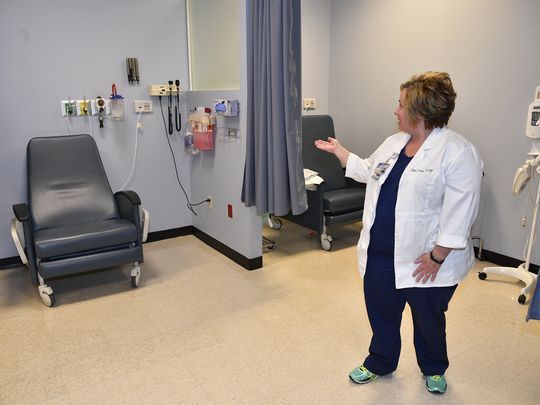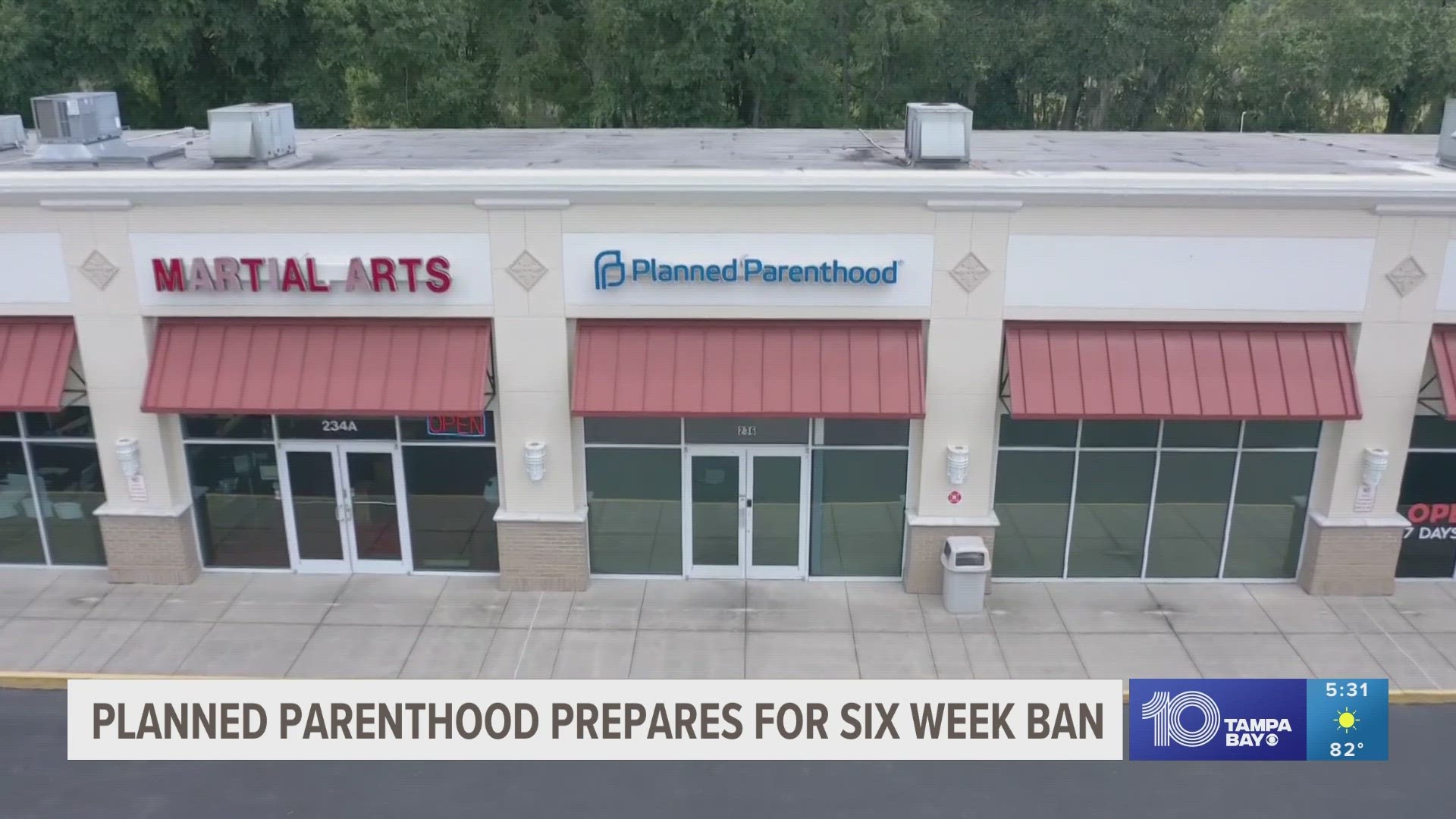U.S. Rep. Diane Black would like to see changes to a federal law to allow emergency department staff to turn patients away.
Black, a Republican gubernatorial candidate and former nurse, said a federal law, called EMTALA is a "burden" that took away clinicians' ability to tell patients that "an emergency room is not the proper place" for treatment.
The law, the Emergency Medical Treatment & Labor Act, requires ER staff to treat any patient regardless of ailment, ability to pay or other grounds of discrimination.
"I would get rid of a law that says that you-you are not allowed, as a health care professional, to make that decision about whether someone can be appropriately treated the next day, or at a walk-in clinic, or at their doctor,” Black, R-Gallatin, said in comments on MSNBC on Oct. 13.
The 31-year-old federal law is a reflection of the nation's health care system, and it's not perfect, ER and hospital leaders say. It was passed to keep ERs from turning patients away and forcing them to other facilities because they couldn't pay.
But implications of a potential overhaul of the federal law intersects with the core of the ongoing national health care debate: Is health care a right or privilege and what happens to those who can't pay?
Changing the law raises questions about logistics, ranging from transportation to the alternative source of care and how referrals to other facilities would work, as well as what it would mean for overall access to the healthcare system.
"I'm not saying EMTALA is the absolute, most perfect requirement," said Dr. Corey Slovis, chairman of the department of emergency medicine at Vanderbilt University Medical Center. "I am saying it protects patients and we need to be careful when we try to tinker with it or eliminate it."
Here are some of the issues that Black's comments raise:
Treating whoever comes in the door, a catchall for the poor or worried
ERs are the first line of care for victims of accidents and violence as well as a place where people with poorly managed chronic disease come when complications flare – potentially to dangerous levels.
And, on the other end of the spectrum, people walk into emergency rooms with the sniffles, bumps and bruises and random pains to get checked out.
Sometimes they don’t know where else to go, don’t have the money to pay or it’s after hours for clinics and doctors' offices.
Sometimes it’s the place people go simply because they need a bed or haven't eaten in three days, said Dr. Ali Bollinger, chief of emergency medicine at Saint Thomas Midtown who oversees the system's nine regional ERs.
"We're really kind of a catch-all for the poorest people in the city," she said.
With the rapid growth in Nashville, for example, a lot of people don't have connections to a primary care group and want something that's bothering them checked out.
"There's a lot of anxiety people feel when they think they don't have access to someone with answers," Bollinger said. "For me, that's a reason for them to come see me. They worry themselves sick, honestly."

In ERs, costs of 'avoidable emergencies' outweigh the costs of colds
Hospitals are trying different approaches to treating the types of patients who walk through the emergency room door. Both Nashville General and Williamson Medical Center — like many of their peers — have fast-track areas for patients with simpler problems.
The colds and sniffles are not the burdens on the system, ER leaders say.
"It's counterintuitive. It seems so easy to say 'just don't let non-emergent cases go to the ER,' Bollinger said. "What we're spending our money on, is patients who are chronically unwell with multiple co-morbid conditions who are basically sick all the time, who teeter on the edge of needing hospitalization."
Webb wants more people better connected into primary care providers or clinics that can help educate about lifestyle, diet and taking proper medications so fewer people end up in the ER with “avoidable emergencies.”
That’s what would make the difference in ERs, the leaders said.
All of Nashville's major health systems have programs to connect people who need a doctor to a primary care practice. Getting people into an appointment, or convincing them it might be affordable is a challenge.
Webb said Nashville General is seeing a decrease in people who come to the ER with simple issues, such as colds, since make referrals to primary care clinics.
The ER still gets the people with complications from chronic disease.
“A large portion of what we see is avoidable but we don’t have really good infrastructure in place to address these chronic conditions," Webb said. "People don’t go out on their own to start learning about this stuff."
Who makes the call to turn a patient away?
About half the people who come into Vanderbilt's emergency room could have been seen by their own primary care provider. Or they could have received help sooner and cheaper in an urgent care or walk-in clinic, Slovis said.
The rear-view analysis is the easy part, Slovis said. But deciding on the spot who doesn't need to be seen in the ER is harder than it seems.
People who come in with chest pain often get told to check in with their doctor "but it's only safe after a bunch of tests and a huge work-up" because musculoskeletal chest pain could be nothing or a serious problem," Slovis said.
Even if an ER staffer was "really good" and had a 99 percent success rate at assessing who could go somewhere else, "one out of 100 times you're going to make a horrible mistake," Slovis said.
It raises questions of liability and lawsuits.
"How do you face that patient's family? It's a high stakes game and you don't want to lose," Slovis said.
A clinic visit takes a copay, an ER visit doesn't
Vanderbilt University Medical Center will take over operation and rename the walk-in clinics at Nashville area Walgreens next month.
ER chiefs want people to have access to urgent care, walk-in and neighborhood clinics – and know when to make the call about which one to choose.
Even if clinics peppered the countryside, the ER would still be a destination for some. People know they will get to see a doctor at the ER whereas an urgent care might be a physician’s assistant or a nurse practitioner.
"I think there's enough (clinics) for those who have private health insurance but the problem is we still have so many uninsured patients who are incapable of paying upfront," Bollinger said.
For many, it comes down to money.
Clinics and doctors' offices almost always require payment or copay at the time of the visit.
ERs see patients regardless of insurance status or ability to pay, a critical difference that makes emergency departments the go-to for those who don’t have money to pay for care.
"Individuals need some assurance that regardless of anything else going on, when I got to the ER I will get some care," Webb said. "If you don't have the funds to pay it then obviously you're just not going to pay it. That's what the system will determine as uncollected, charity or bad debt."
Reach Holly Fletcher at hfletcher@tennessean.com or 615-259-8287 and on Twitter @hollyfletcher.


